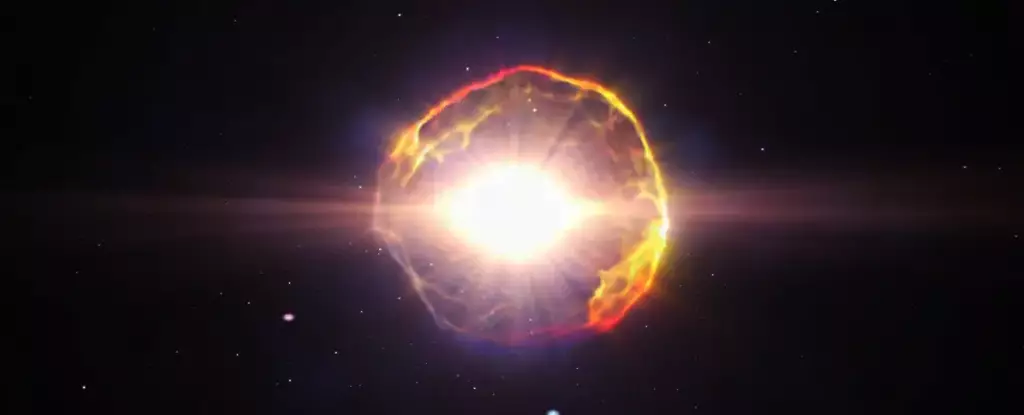A once-in-a-lifetime event is set to take place this year as a nearby exploding star is anticipated to put on a stunning display that could surpass the brightness of our North Star. Located 3,000 light-years away from Earth, this massive stellar explosion, known as a nova, is expected to be visible to the naked eye for up to a week. Skygazers around the world are gearing up for this awe-inspiring cosmic event.
The impending nova is centered around a star known as T Coronae Borealis, where a white dwarf – the remains of a dead star – is in close proximity to a giant red star. As the red giant disintegrates other nearby stars, the white dwarf absorbs the hydrogen-rich materials, eventually reaching a critical point where it releases a tremendous amount of energy in the form of a nova. Astrophysicists describe these novae as powerful hydrogen bombs that light up the sky.
This upcoming explosion of T Coronae Borealis has been observed multiple times by astronomers since the late 1800s. However, the light from this event takes thousands of years to reach Earth, and the last visible nova occurred in 1946. This means that the anticipated explosion is a delayed visual representation of an event that already occurred in the distant past. Sky enthusiasts are encouraged to witness this spectacle as it will not occur again until the early 2100s.
To ensure that you don’t miss this extraordinary celestial event, it is advisable to stay updated with NASA’s announcements. By subscribing to the @NASAUniverse channel, you can receive real-time updates on when and where to witness the nova. Additionally, familiarize yourself with the Hercules constellation, located near Vega and Acturus, where the eruption is expected to occur. Choose a clear night away from city lights and use a star map app to identify the constellation. Remember to give your eyes time to adjust to the darkness for optimal stargazing experience.
In addition to the nova explosion, there are other exciting celestial events to anticipate this year. A total solar eclipse is set to sweep across the US and Canada in April, providing a rare opportunity for sky watchers. Furthermore, the green comet 12P/Pons-Brooks is becoming increasingly visible from Earth and may soon be visible to the naked eye. This convergence of astronomical phenomena makes 2022 a prime year for stargazing enthusiasts.
As you prepare to witness the upcoming nova explosion, remember to keep an eye on the latest updates from NASA and plan your stargazing excursion accordingly. Embrace the beauty of the night sky and marvel at the wonders of the universe unfolding before your eyes.


Leave a Reply